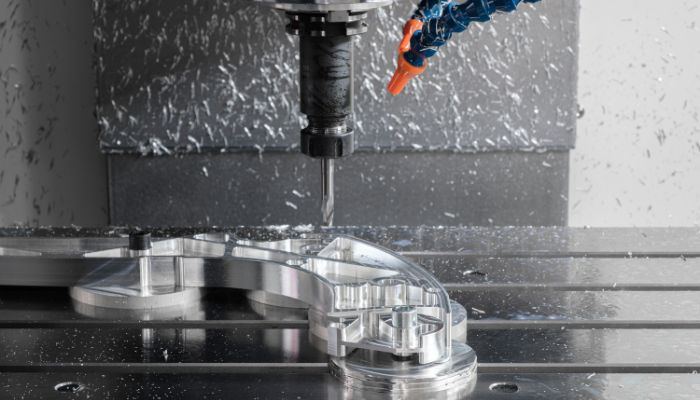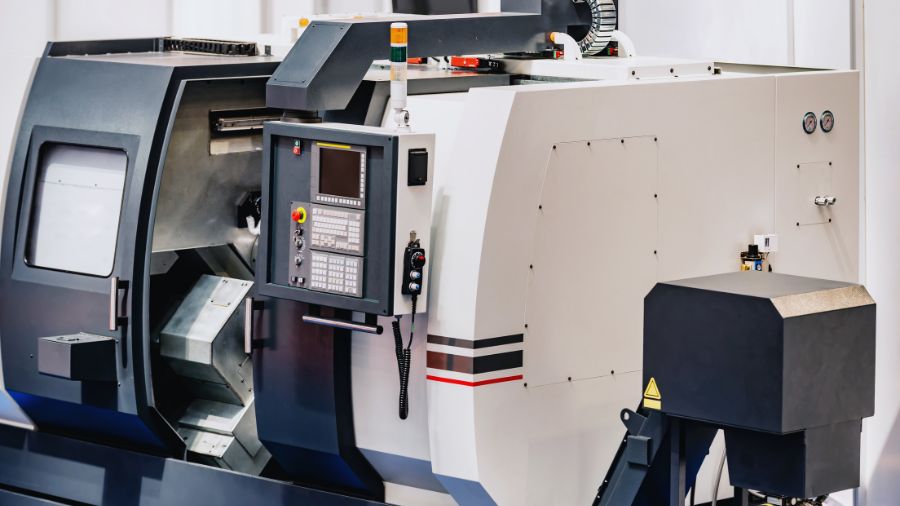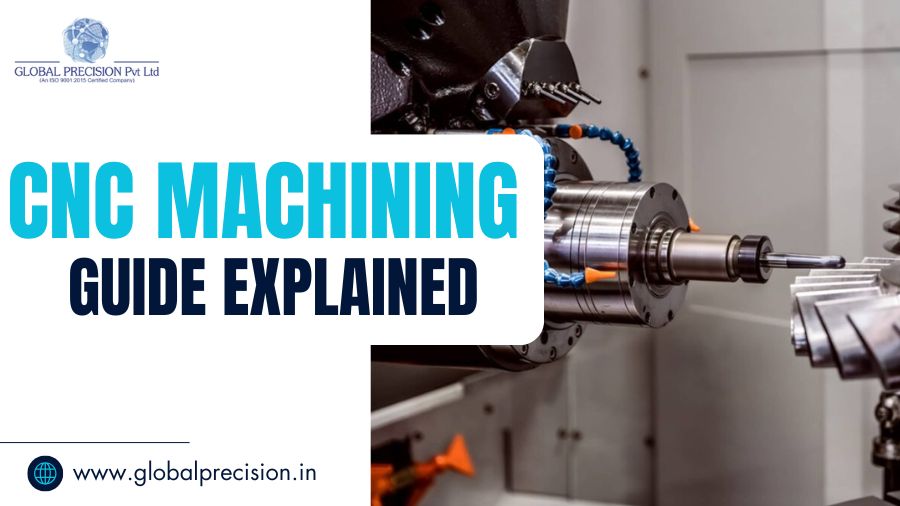CNC machines are the gold standard in precision manufacturing due to their pace, accuracy, and capability to hold stringent CNC tolerances. The evolution of CNC machining has featured extreme invention, as it permits the design and manufacture of parts with extremely strict geometry.
A Component Manufacturing Company said that there is no doubt that this procedure is vital to make a number of products that we utilize regularly. Below we describe important things that teach you everything about CNC machining.
Understanding CNC Machining
CNC stands for Computer Numerical Control. So, CNC machining is any type of machining procedure managed by a computer. Computerized automation permits parts to be formed more rapidly, accurately, and with more intricate geometries than those presented through manual machining. CNC also decreases the number of manual machining workers who would otherwise be employed by humans. While they are not machining each part themselves, people are vital for programming and operating the machines, making sure that every function goes seamlessly.
How Does CNC Machining Work?
The schedules utilized for CNC machining these days are written with G-code and are typically automatically crafted by CAM software, which produces the G-code for a 3D model with provided equipment and workpiece, and tool changes. It even has auxiliary parts such as a switch for turning on or off the coolant and other parts.
CNC machining can be utilized for a broad range of materials, with the basics being steel, brass, aluminum, Delrin, ABS, and nylon. But truly, almost any tough material can be CNC machined.
The History of CNC Machining

Everything was done by hand in the early days of manufacturing and machining. Although the process was rather ineffective and slow, people – especially engineers – are motivated to advance. We have reached this point because automating a process increases its productivity, safety, and efficiency.
Cams that played musical boxes served as the model for one of the earliest methods of automating the machining process. The 1870s saw the adoption of this mechanical automation method, which converted rotary motion into linear motion using mechanical linkages and cams. Cams are typically revolving wheels that have a geometric component that strikes a lever while it rotates, such as an eccentric radius or a key that sticks. This triggers the tool or machine to produce a part.
Tracer control was an additional automation technique that employed hydraulics to trace a template with a stylus. Templates several feet across could be copied by this. General Motors invented a technique known as record and playback in the 1950s that captured and reproduced the motions of a person machining the part.
The primary problem with these early automated processes was their lack of precision and accuracy. The linear motion required to cut through metal could not be achieved by the control methods. Because servomechanisms can perform strong, precise movements, they become the answer to this problem as they were developed. A synchro, which precisely synchronizes the motion of one servo with that of another, can be created by attaching two servos. In order to establish a closed-loop control system, machinists could precisely measure the output of these synchros and use that information to guide the synchros’ subsequent motion.
Five refrigerator-sized cabinets were needed to house the controllers for this type of numerical control (NC) machining in the 1950s. NC machining increased in popularity as computers got cheaper and smaller. Drafting on paper was phased out in the mid-1950s because these smaller computers were more powerful and could process more data. Since then, computer-aided design (CAD) and computer-aided manufacturing (CAM) have grown in popularity and accessibility. They are not considered industry standards, and it is absurd to think of producing a part without CNC machining or a 2D engineering drawing on paper!
Types of CNC Machines

1. CNC Milling
The machine bed, which is where the part is arranged safely in place, is part of CNC milling. A fast-twirling cutting tool is also available. A typical 3-axis machine has a bed that moves from left to right and back and forth, while the tool moves up and down. The movement of this equipment and machine bed depends on the number of axes of movement your machine has.
2. CNC Turning
The majority of parts that are axially symmetric are CNC Turned Components & Parts. In the machine, a cutting tool moves from front to back and side to side as the workpiece spins quickly. It can be quicker and less expensive per unit to machine parts on a lathe as opposed to a mill.
3. CNC EDM
Electric discharge machining comes in a variety of forms, such as hole drilling EDM, sinker EDM, and wire EDM. A conductive workpiece is necessary for each of these procedures. One electrode is the tool, and the other is the workpiece. An electric arc is produced through the dielectric fluid when the voltage between the two increases while they are both submerged in it. This gives the electrodes the final geometry that is desired by removing material from them.
4. CNC Gear Hobbing
Gears can be made in a variety of ways. A wide variety of materials can be used to create functional gears. In a similar vein, gear hobbing is not limited to metals but can be used on a variety of materials. A unique kind of milling machine with a cutting tool called a hob is called a gear hobbing machine. The keys, or splines, of the gear are formed by this job’s gradual cutting into the gear blank.
Advantages of CNC Machining
1. Quick Prototyping
CNC machining is the best for making a low volume of components. The startup time is quick. A CAD model can then be turned into a CAM program for a CNC machine, and you are ready to get to work! Rapid prototyping frequently uses CNC machining because it can typically produce a small number of CNC parts quickly. Since the equipment and tools are probably already in use in the machine shop, startup costs are minimal. As a result, instead of wasting time creating a die or mold, you can start machining the parts.
Prototype parts that are CNC machined are also excellent. You can use parts for functional testing or to validate the aesthetic concept because CNC machines can maintain tight tolerances and produce high-quality finishes. Designs are frequently still being refined during prototyping, but CNC programs are simple to modify as designs change. Additionally, there is no tooling to make or alter when utilizing a CNC machine. Additionally, a wide range of materials can be machined, and different geometries can be created to compare the performance and properties of various materials.
2. Manufacturing
Finally, end-use parts made from a range of materials are also produced via CNC machining. Because of its quality and speed, it is utilized in production. Furthermore, there is little chance of overproduction and parts in inventory because parts can be produced in response to demand.
For assemblies, a CNC machine’s capacity to maintain precise tolerances and generate high-quality components is particularly important. Each component of an assembly must be precisely machined, and CNC precision machining can maintain tolerances as small as 0.0002.
Applications and Industries of CNC Machining
1. Consumer Electronics
A number of components of client products are crafted utilizing CNC machining as its pace permits the growth cycle to keep pace with market needs. Enclosures of some laptops are usually formed in this manner, as are a number of small parts in cell phones. Several companies also generate circuit boards on CNC machines.
2. Automotive
CNC machining is broadly utilized by automotive corporations as the program and setup can be effortlessly transformed for custom car components and low-volume operations. Some of the most basic parts of cars that are CNC machined comprise cylinder heads and acrylic components for interior and exterior lighting.
3. Robotics
Robots require precise movements and positioning, which is where the high-dimensional accuracy of CNC machining comes into play. Additionally, CNC machining works well for producing gears, which are essential parts of robots. Even though robots are increasingly being used in manufacturing, they still need to be created in some way! The end effector parts that pick up and interact with components are made by CNC machining. In addition to robotics, custom fixtures and jigs are CNC machined.
4. Aircraft
There is no margin for error in the final products of aerospace manufacturing, such as airplanes. Because of its accuracy and precision, CNC machining can produce parts that are guaranteed to last, which is crucial for creating safe aircraft. The stator assemblies that go into aircraft engines, titanium shroud sets that go into jet engines, and turbine exhaust struts are a few examples of aerospace and aeronautical parts that are CNC machined.
5. Medical
Medical devices require precise machining, and CNC machining can help. CNC machining is a good option because these parts are frequently custom or low-volume. The selection of materials for medical devices is more constrained because the material must be safe and authorized for human contact, sometimes over an extended period of time. Because they satisfy these requirements, materials such as titanium, cobalt-chrome, stainless steel, and PEEK are utilized for either temporary or permanent implants that are CNC machined. Medical devices like catheters, stents, MRI machine parts, and tools like forceps or clamps are examples of additional machined parts.
Numerous industries have found use for CNC machining due to its production benefits and extensive selection of materials and finishes. Specifically, Global Precision Pvt. Ltd is leading the way in robotics, aerospace, medical devices, automotive, and consumer electronics sectors.
The Future of CNC Machining
1. Industry
CNC machining is now more accessible than ever thanks to digital manufacturing and transformation. A quote can be obtained instantly by uploading a model, and parts can be delivered in less than a week. It is also not limited to personal projects, hobbyists, or start-ups! On-demand manufacturing offers large businesses the advantages of inventory control and supply chain agility.
2. IoT
Communication between machines at various manufacturing stages has increased thanks to the Internet of Things. These smart devices generate a lot more manufacturing data, and businesses can identify and fix problems more quickly by using machine learning techniques. In the CNC machining process, the Internet of Things makes it possible for “smart machines” to perform process qualification and take measurements.
3. New CNC Technology
Although CNC machines have been around for a while, the technology has kept improving. One such invention that has increased the efficiency of CNC machining is the multi-axis machine. Additionally, their use will only grow. As technological advancements increase the affordability of 5-axis machines, in particular.
Additionally, CAD and CAM software keep getting better. More people can now afford these technologies, making them accessible to a larger group of people. Additionally, software that is easier to use and more intuitive will improve accuracy and efficiency while reducing design cycles.
To speed up CNC machine operations like milling, drilling, tapping, deburring, and chamfering, research is continuously being done. From machine capabilities to materials and cutting tool geometry, people are tackling this in a number of ways.

